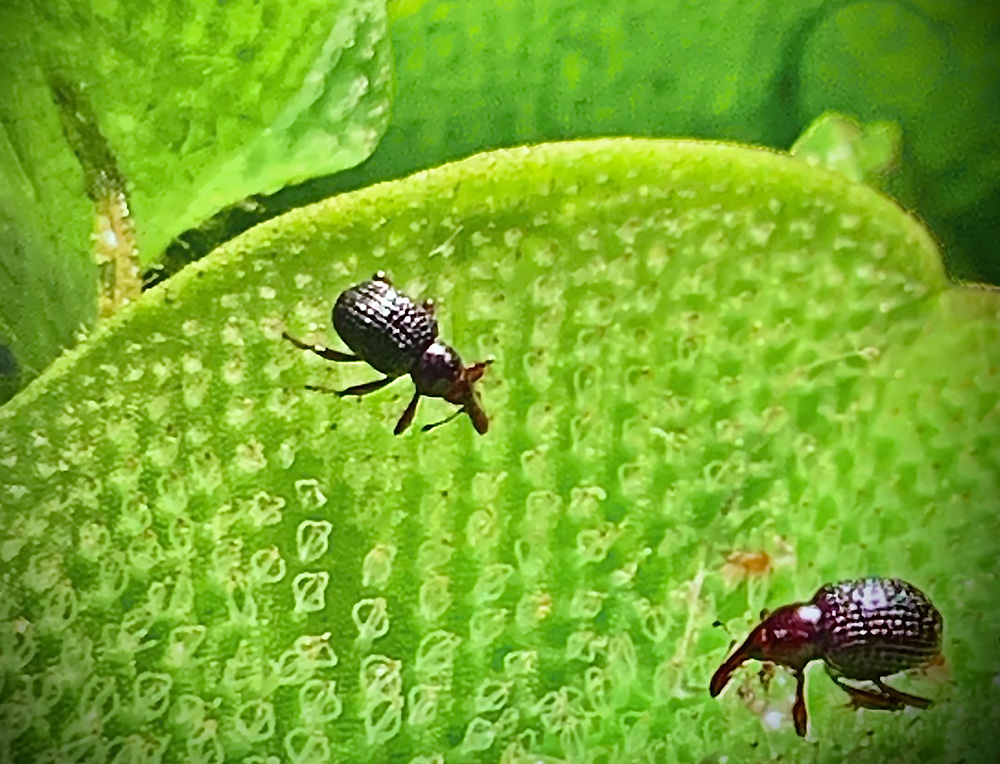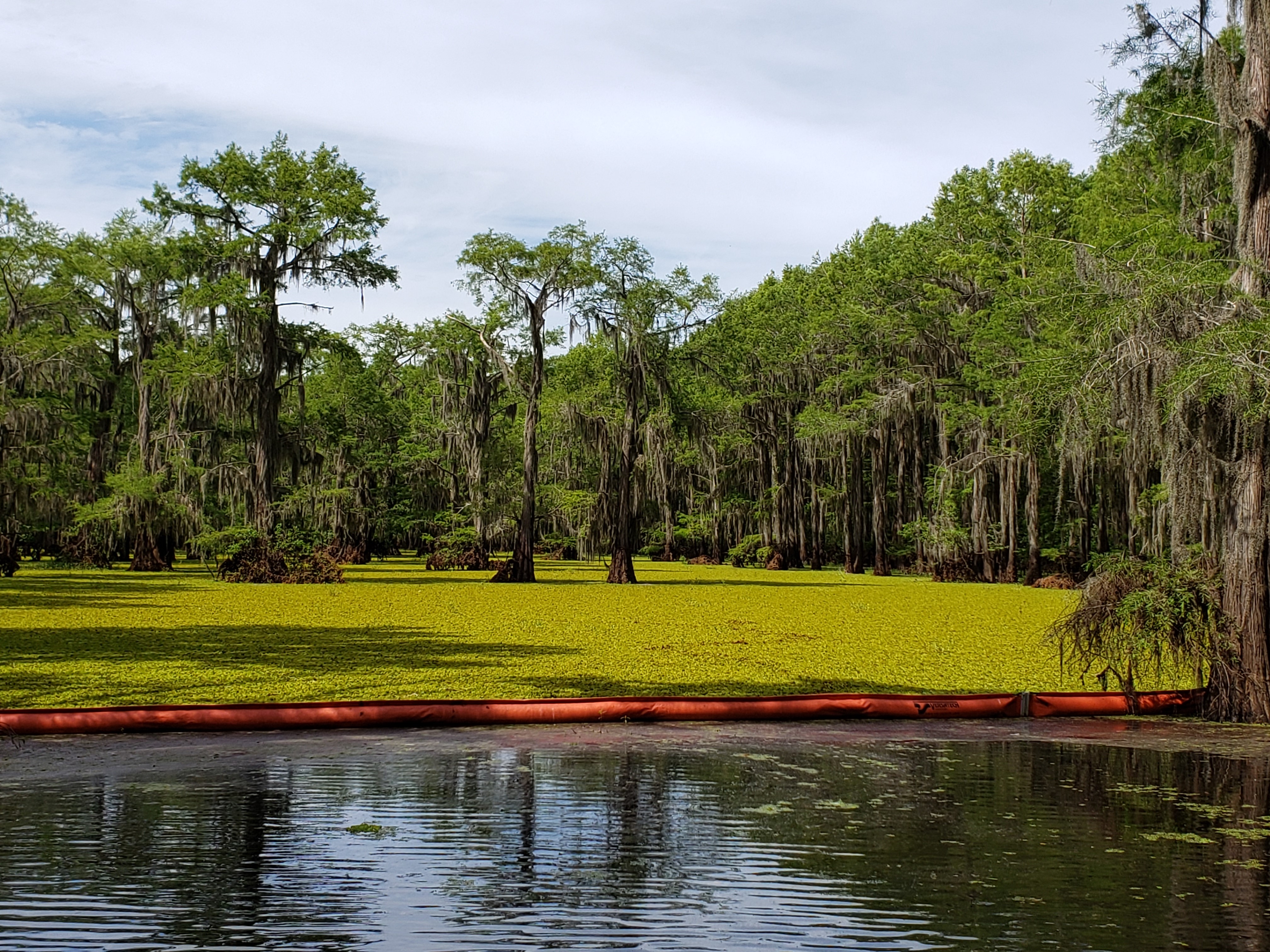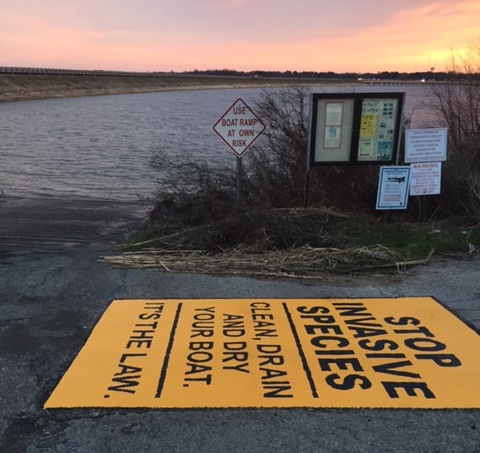Aquatic Invasive Plants
Using an Integrated Pest Management Plan to Fight Aquatic Invasive Vegetation
Integrated Pest Management (IPM) is the broad-based use of management practices to solve pest problems while minimizing risks to humans and the environment. Texas Parks and Wildlife Department’s IPM plan implements a variety of vegetation management methodologies (biological, chemical, mechanical, and outreach) to control aquatic invasive vegetation in the state’s public waters.
Biological Control Agents
A variety of biocontrol agents have been used by TPWD to manage aquatic invasive vegetation. These include giant salvinia weevils, water hyacinth weevils, water lettuce weevils, alligatorweed flea beetles, hydrilla flies, and triploid grass carp. Biological control agents, especially insects, can take several years to reach population levels high enough to provide control. For example, nearly 650,000 adult giant salvinia weevils are needed to control one acre of giant salvinia only a single layer thick. To complicate matters, below freezing temperatures can kill giant salvinia weevils. Currently, TPWD is using a combination of giant salvinia weevils, alligatorweed flea beetles, and triploid grass carp as part of the IPM plan to manage aquatic invasive vegetation on Texas’ public waters.

Mechanical control/removal methodologies
There are a number of mechanical control and removal methodologies that have been used by TPWD to manage aquatic invasive vegetation which include harvesters (hydrilla, water hyacinth, and giant salvinia), shredders (water hyacinth), floating booms (giant salvinia and water hyacinth), and manual removal (giant salvinia, water hyacinth, water lettuce, and hydrilla). Harvesters and shredders are not cost effective and are often limited by shallow water and submerged timber. Manual removal can be effective primarily when new infestations of aquatic invasive vegetation are first discovered. Control of non-native species such as giant and common salvinia has been possible on lakes Fork, Athens, Naconiche, Houston County, Raven, and parts of Caddo through the use of floating booms. Currently, TPWD is using floating booms and manual removal as part of the IPM plan to manage aquatic invasive vegetation on Texas’ public waters.

Herbicide Applications
TPWD has effectively used herbicides to manage numerous species of aquatic invasive vegetation, including giant salvinia, common salvinia, alligatorweed, crested floating heart, yellow floating heart, water hyacinth, water lettuce, Eurasian water milfoil, and hydrilla. All TPWD herbicide applications are conducted in accordance with each specific herbicide label as approved by the Environmental Protection Agency (EPA). All TPWD employees conducting herbicide applications on aquatic invasive vegetation possess pesticide applicator’s licenses with aquatic certification through the Texas Department of Agriculture. All herbicides used are approved by the EPA for use in aquatic environments. Currently, TPWD is using herbicides as part of the IPM plan to manage aquatic invasive vegetation on Texas’ public waters.

Public Outreach
 Prevention is the first line of defense against aquatic invasive vegetation. If reported early enough, TPWD can implement its rapid response protocols to prevent the further spread of aquatic invasive vegetation within a waterbody and substantially increase the chances of eradication. TPWD public awareness campaigns to educate anglers and boaters about the dangers of aquatic invasive vegetation. Campaign elements include: advertisement at marinas, convenient stores, and gas stations; radio and satellite radio advertisement; online videos and social media advertisement; boat ramp signs and stencils; and traditional media outlets such as newspapers, magazine articles, and television interviews.
Prevention is the first line of defense against aquatic invasive vegetation. If reported early enough, TPWD can implement its rapid response protocols to prevent the further spread of aquatic invasive vegetation within a waterbody and substantially increase the chances of eradication. TPWD public awareness campaigns to educate anglers and boaters about the dangers of aquatic invasive vegetation. Campaign elements include: advertisement at marinas, convenient stores, and gas stations; radio and satellite radio advertisement; online videos and social media advertisement; boat ramp signs and stencils; and traditional media outlets such as newspapers, magazine articles, and television interviews.
Watch the "Lake Dudes" - Videos
Learn more about Outreach and Prevention
